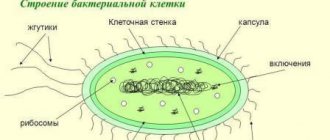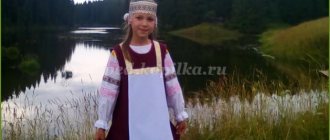Flora of the Kursk region
Forests occupy a small part of the Kursk region. Pine forests are extremely rare and most often they are planted by humans. In these forests you can find tricolor violets, hare cabbage, and a variety of lichens. Pine forests are famous for a large number of butterfish.
Aspen forests are also rare in the Kursk region. They replace cut down tree species. Most often, oaks, ash, maples, and elms grow in these forests, which gradually transform the aspen forest into an oak grove.
Birch forests consist of birches themselves and a large number of shrubs and grasses. Here you can find bluegrass, meadow fescue, common bentgrass, ranunculus, wild strawberry and many other plants.
Some of the tallest forests are alder. They are very damp, the trunks are entwined with vines. Raspberries and currants grow well in such conditions.
The oak forests of the Kursk region are located along the river banks. The most common species found there are English oak, as well as common ash, Norway maple and elm. And under these tall trees grow forest apple trees, pear trees and field maples.
The shrubs of oak forests are quite diverse: thickets of hazel, buckthorn, euonymus and hawthorn.
Some types of mushrooms grow in the Kursk region, such as porcini mushrooms, russula and boletus mushrooms.
The meadows are covered with different types of grasses and shrubs. Bluegrass and wheatgrass grow on dry soil. Timothy and bromegrass, buttercup, adonis and others are located in more humid areas. But on the banks of rivers and lakes, beckmania and sedge grow.
Reeds, reeds, willows and alders grow in the swamps, lakes, rivers and ponds of the Kursk region. You can also find a large number of water lilies, algae, and egg capsules.
Project for schoolchildren. Motherland
Project Land of Blooming Steppes...
Author : Klimeshina Galina Vasilievna, teacher of Russian language and literature, Municipal Budgetary Educational Institution "Secondary School No. 3", Astrakhan Every time, leaving the house, a person discovers around him many phenomena of the surrounding world. You can, of course, go your own way and not notice anything, or you can think about everything you see. You don’t need to travel hundreds of kilometers, you just need to look around carefully, maybe then you will notice the beauty of your native places and fall in love with them. This project will help you get acquainted with the history of research into the flora of the Astrakhan region, select plants from semi-desert zones for study, and study the significance of these plants as medicinal and food raw materials. Contents 1. Introduction.
The land of flowering steppes 2. A landmark of the steppe 3. In search of steppe tulips 4. The magic of poetry 5. From legend to life: a) longevity and health from steppe doctors; b) Astrakhan recipes using herbs and flowers 6. The joy of communicating with nature 7. Conclusion 8. Literature The land of flowering steppes
Each person has his own small homeland.
This is the place where he was born, where his ancestors lived and where his children live. For us, Astrakhan residents, such a small homeland is the Astrakhan region with its unique nature, sometimes generous, and sometimes harsh, the history of peoples and cultures going back centuries. The Astrakhan region is located in two natural zones - semi-desert and desert, but residents of the region and people who have seen our region consider it steppe. We decided to dedicate this work to the endless Astrakhan steppe, which in our time determines the fate of many people in our native land. Relevance. Every time a person leaves home, he discovers many phenomena of the surrounding world around him. You can, of course, go your own way and not notice anything, or you can think about everything you see. You don’t need to travel hundreds of kilometers, you just need to look around carefully, maybe then you will notice the beauty of your native places and fall in love with them. Problem. Ignorance of the nature of their native land has led to the fact that most people have no desire to preserve nature as a whole. The following research objectives follow from the problem posed : to pay close attention to the usual objects of the flora of the Astrakhan region; study the influence of individual representatives of the flora of our region on the human body for the purpose of practical application; show the influence of folk traditions on human spiritual development. Thus, certain Tasks arise before us: 1. To get acquainted with the history of research into the flora of the Astrakhan region; 2. Select plants from semi-desert zones for study. 3. Study the significance of these plants as medicinal and food raw materials. Objects of research: plants of the Astrakhan region, desert and semi-desert zones. Research methods: visual observation, selection and study of information about plants of the Astrakhan region. Practical significance Acquaintance with the past and present, with the peculiarities of nature awakens pride in one’s small homeland and the desire to make one’s land prosperous.
We need to know our native land well and sincerely love it - this is the task of each of us. Then all the secrets of nature will be revealed to man, she will help and warn of danger. 1. Landmark of the steppe
On a huge area delineated by the lines Astrakhan - Kamyshin - Volgograd - Elista - Astrakhan, lies the steppe. Smooth as a drafting table, seemingly boundless, it has largely retained its original appearance. In the southernmost part, the monotony of the Caspian steppe is somehow suddenly broken by the appearance of the Baer mounds on it. They are located in parallel rows, stretching from east to west, their height does not exceed 7-10 meters, and the further south the location of the mounds, the higher they are. The soil, which receives an insignificant amount of moisture, is so saturated with salt that during the wind, when it carries grains of salt raised from the surface of the soil, its taste is felt on dry lips. The abundance of salt in the soil and lack of moisture allows the growth of silver-ash wormwood, solyanka, whose fleshy leaves-pads colorfully change color, as well as other types of flora that have adapted to the difficult struggle for water. Among them are many remarkable plant species of interest. Our story will be about them.
Astrakhan steppe in May
2. In search of steppe tulips
Many scientists and botanists studied the Astrakhan steppes. These are primarily the leaders of the expeditions S.G., Gmelin, P.S. Pallas, K.M. Baer, I. Lepyokhin, K.K. Klaus, E. A. Eversmann, I.K. Pachosky, A.Ya. Gordyagin. The famous traveler and naturalist Karl Maksimovich Baer (1792-1876) made a great contribution to the study of this area. He described the soil, vegetation and geographical location of the steppes and hillocks.
Routes of explorers of the Astrakhan region. XVIII century I. Lepyokhin, traveling through the Astrakhan province in 1769, wrote: “The greatest excellence of this steppe is the abundance of salt, which, so to speak, is scattered throughout the steppe... The dew even seemed degenerate, for it was just as salty...” In the twentieth century studies of the floristic composition of steppes, meadows and floodplains were continued by A.G. Ramensky, A.F. Zhivoglyadov, G.E. Safronov, and currently the works of V.N. Pilipenko, G.A. Losyev, A.N. Barmina. Thanks to the research of these scientists, we imagine our native land not as faceless and deserted, but as unique, bright and multifaceted at different times of the year. Dry steppes or semi-deserts occupied the northwestern half of our region, and a strip of desert lands stretched in the south and southeast. The vegetation in these places is poor. You see a different picture in the floodplain and delta of the Volga. Forests, thick lush grasses, shrubs, reeds - this is what is found in the Astrakhan expanses.
A strip of trees and shrubs in the floodplain There are no forests here. Reed. Water. And the nights are black as coals, Throwing seines and milky nets into the jungle. The East brings sands here from the hot Karakum, and if you stand on your toes, you will see the gloomy hills in the distance. (B. Filippov) Spring is good in these places. The sparkling sun melted the snow that had accumulated over the winter. Life-giving moisture penetrated deeply into the soil. Spring sun rays gently warm the vast semi-desert plain. White clouds float in the blue sky. In April - early May, the steppe is saturated with moisture. Therefore, you should admire the beauty of steppe flowers soon after the water recedes. Heat and moisture quickly germinate grass and flower seeds. In a few weeks the steppe will be covered with a green grass carpet. At this time, sedges, white wormwood, astragalus, bluegrass, bright red and yellow tulips, steppe poppies and irises bloom profusely.
Schrenk's tulips (tulipa schrenkii) bloomed
Blooming poppies
May irises
3. The magic of poetry
It seems that time has stopped here, and the ancient steppe is still as beautiful as it was hundreds of years before us. Everything awakens with the arrival of spring. People come from afar to admire the beauty of tulips, irises, poppies in the vast expanses of steppes and unplowed hillocks. The wind sways the heads of the flowers, and yellow-red waves run across the plain. I want to breathe in the slightly bitter air and write poems about my native land. Spring Spring's handwriting is becoming more and more clear: The earth has swollen and thawed, And they salute with shots of buds In honor of the first days of spring poplars... (B. Shakhovskoy) Tulips of my Motherland, you are blooming - and the world is brighter! How beautiful he is - that fiery flower! On a long stem, proud and lonely. The petals of a closed bud are beautiful. For four centuries the world has been in love with him... What is in the heart of an unopened tulip? What is the miracle of his beauty, what is the secret? I really want to believe... look - the lovely Thumbelina inside... (From a collection of poems by Astrakhan poets) Astrakhan spring The gentle sun is ever higher, There is more and more blue and warmth, Which is pouring from heaven to us, Breathe, earth, spring has come! She, having gained strength in the channels, carries dark ice along the Volga. Then the grass will turn green, And the first iris will bloom. Tulips, poppies and wormwood will begin to dapple the magic carpet. And the lark's song will flow. Above the edge of fish and steppe. (G. Klimeshina)
Spring in the painting by B.M. Kustodieva
4. From legend to life.
a) Longevity and health from steppe doctors. Wormwood A long time ago, this story happened in the steppe. A young beauty grew up with a poor man. Her name was Wormwood. The eyes were blacker than the night, the lips were redder than the dawn, the face was whiter than the first snow. She was meek, hard-working and in love with the steppe region. The son of a rich gentleman galloped to those places. He was arrogant, deceitful and cunning, like an old fox. Kovyl, that was his name, spent a long time and unsuccessfully seeking the love of the beauty. And one day the vile liar took revenge on her: at a national aitys (dispute) he sang a couplet that he had disgraced the girl, taken away her honor and now allows anyone to mock her. For nine moons the beautiful Wormwood galloped across the steppe, shedding bitter tears. And the pursuit, led by the smug Kovyl, had already begun to overtake her. Then the girl stopped the wheezing horse and shouted into the steppe: “Hide me, hide me, protect me from shame!” And suddenly she disappeared. The grass fled from that place. In spring it is bitter, like a girl’s burning tear, and in late autumn, when all the herbs die, it is sweet and edible. So Polynushka became the daughter of the steppe. Evil Kovyl was also turned into grass. Its seed has a harmful, dangerous property - corrosiveness. It gets into the wool of the sheep and stitches right through the body. Animals and people avoid him too. The beautiful legend about wormwood does not detract from its most important medicinal properties. This is a very valuable medicinal plant. Among the ancient Slavs, wormwood was considered a cult plant with the ability to cleanse the spiritual and physical world. In Latin it was called “Artemisia” - in honor of the famous goddess Artemis, who discovered many of the healing properties of herbs. Wormwood has gained the greatest popularity among people for its medicinal, cleansing and cosmetic properties. It differs from other species primarily in its overall grayish-silver color. The upper surfaces of the leaves of wormwood are whitish in color and the stem also looks silky grayish. And the flower baskets of this plant are yellow. This is a perennial wild plant with a characteristic specific aroma and a very bitter taste. The smell of wormwood is quite strong and resembles a bitter-tart taste. It grows almost everywhere, has a straight, up to 1.5 m in height, spreading stem. Wormwood is a proven home remedy. For application and treatment, the above-ground part of the plant is used without the lower woody parts of the stems, as well as flowers and roots. The bitter taste of wormwood stimulates the vital functions of the body, gives excellent tone, and has healing and cleansing properties. The value of wormwood and its use have increased even more with a number of discoveries in the field of microorganisms inhabiting our body. Not all of them, as it turns out, are useful to us. Such as: toxoplasma, chlamydia, trichomonas, gonococcus, yeast fungi, viruses, mycoplasma, ureaplasma, gardnerella, etc. slowly but surely destroy the human body, leading it to the most dangerous diseases. Research shows that they affect about 90% of the entire population of the planet. The presence of this pyogenic infection causes metabolic disorders in the body, leads to inflammation of the small intestine, various diseases of the liver and biliary tract, skin diseases (diathesis, allergies, urticaria, eczema, psoriasis, etc.), heart attack, various colds with mucus and pus. Wormwood is one of the effective, affordable and natural remedies in the fight against these microorganisms. Many species of plants included in the medicinal group are very rare, so you cannot harvest such plants yourself. These include thyme, lily of the valley, nut lotus and creeping calamus. However, in our region there are quite a lot of other medicinal species: dandelion, blackberry, licorice, marshmallow, immortelle, parmelia, hawthorn, silver elf. Let's look at the properties of some of them. Dandelion officinalis is a perennial herbaceous plant. It grows everywhere and is especially noticeable during the flowering period with its bright yellow flowers. In the spring, when the body has exhausted its vitamin reserves, dandelion is a great opportunity to replenish them. Dandelion improves the functioning of the gastrointestinal tract; it is used as a choleretic, diuretic, antipyretic, diaphoretic, blood purifying, and bactericidal agent. In honor of the dandelion, the famous American science fiction writer Ray Bradbury wrote a story - “Dandelion Wine”, where he describes the magical properties of this plant... Parmelia lichen (cut grass) has a gray-green color and consists of forked-branched plates 3-5 cm high, swelling after the rain. Parmelia develops on the dry clay slopes of the Baer hillocks and throughout the region. It does not bloom, so the entire plant is harvested during the summer. Lichen is widely used in folk medicine as a remedy for the treatment of gastrointestinal diseases, pulmonary tuberculosis, chronic cough, acute colitis, toxic dyspepsia, and also as an immunostimulating agent. Lichen has a calming effect on the mucous membrane of the respiratory tract. Externally, parmelia decoction is used for trophic ulcers and purulent wounds in the form of compresses and rinses, which effectively cleanse wounds and ulcers of pus, which promotes rapid healing. Iris In folk medicine, in the form of an infusion, iris is used for dropsy, toothache, and externally as a mouth rinse for scurvy. Under the name “orris root”, iris rhizomes are included in breast tea. In homeopathy, iris is used mainly to treat inflammation of the pancreas and salivary glands, as well as for autonomic neuroses. Substances contained in astragalus herb dilate blood vessels, stimulate the activity of the heart muscle, and slow down the heart rate. They also reduce blood pressure in hypertension. Astragalus preparations are used for heart failure, dizziness, headaches, and pain in the heart area. In addition, astragalus acts as a vasodilator, choleretic, astringent, hemostatic and wound healing agent. B) Astrakhan recipes using herbs and flowers. Thyme is one of the most popular culinary seasonings; it not only adds a special taste to food, but also improves digestion. That is why it is recommended to add thyme to fatty lamb and pork dishes. It is also used when cooking fatty fish. Thyme is good when combined with pepper, this enhances its flavor. In powder form, it is used in large doses in all kinds of fish dishes and minced fish. When frying fish, thyme is mixed in large quantities with breading (and best of all with flour in a 1:2 ratio). In addition, thyme is sprinkled on cheeses, and it is also used in the preparation of homemade cheeses. It also goes well with vegetables. Thyme is added to liquid dishes 15 - 20 minutes before cooking, to other dishes - during the cooking process. Dandelion leaf salad For the recipe you will need: dandelion (leaves) - 75g, green onions - 10g, vegetable oil - 5g, 3% vinegar - 5g, parsley or dill - 8g, salt. Prepared dandelion leaves are soaked in salt water (20 g of salt per 1 liter of water) for 30 minutes. then place in a colander and allow the water to drain. Chop, add finely chopped green onions and parsley, mix, season with vegetable oil, salt, vinegar, sprinkle with chopped dill. Dandelion jam For 400 dandelion heads, 1 large lemon and 1 kg of sugar. Separate the dandelions from everything green, and add one liter of water to the yellow petals. Leave for several hours, then add lemon cut into 4 parts and cook for 1 - 1.5 hours. Cool, or better yet, let stand overnight. Strain and then squeeze out the petals. Discard the petals, finely chop the boiled lemon, add sugar to the broth and cook until it thickens. It should look like liquid honey. This jam is a good preventative for asthma and bronchitis. Salsify root soup. For 1 liter of water take 100 g of salsify roots, 150 g of potatoes, carrots, onions, fat, spices. Boil the potatoes and roots until tender, drain the water, add boiling water, add the fried onions and carrots, bring to a boil and season with spices.
Salsify salad. Keep the stems and leaves in boiling water for 2-3 minutes, remove the skin from the stems, cut the greens. You can add nettle greens, goose onions, and sorrel.
Potentilla fork Roots of the cinquefoil are boiled. Boil the roots of the cinquefoil in salted water and peel.
Finely chop the lard, partially melt it and fry finely chopped onion until golden brown. Pour greaves and onions over the tubers and sprinkle with dill. For 200 g of cinquefoil roots - 50 g of lard, 1 pc. onions, 1 teaspoon chopped dill. 5. The joy of communicating with nature.
Sunset Talking about such richness and diversity of the Astrakhan flora, one can say: “The world that surrounds us is beautiful!” It `s naturally. There is probably no person on earth who would not be delighted by the pictures of his native nature. After all, people have not lost their connection with nature. It is no coincidence that we call her mother. As a mother, she not only gives us material benefits, but also gives rise to high feelings and thoughts in our souls. How much joy communication with nature brings us! We learn to see in it “the beautiful strings of the human soul,” to appreciate and love it. I would like to add only the words once spoken by M.M. Prishvin: “Understand quickly!” Otherwise it won’t happen another time.”
Conclusion
Everything that surrounds us: air, earth, water, fields, forests, steppes, plants and animals is nature. We often say: “Nature is our home.” In other words, our habitat. And in order for us to live, that is, to live well, happily, our habitat must be in order: the water and air must be clean, the trees, animals and birds must be healthy. If we cannot enjoy nature, we will never be able to live fully. And in order to enjoy nature, you must know it and take care of it. If every person does at least something to protect nature, then humanity on Earth will exist indefinitely.
We recommend watching:
Intellectual ecological game in 5th grade. Environmental project in the elementary school of the NOOD “What do we know about birds.” NGO "Cognition" (natural world). Senior group Ecological fairy tales for younger schoolchildren
Similar articles:
Open lesson-project on the world around us, grade 3
Earth Day. Scenario for schoolchildren
Ecological game. Script for high school students
Ecological quiz for children 10-14 years old. Scenario
Class hour 10th grade on the topic “Our nature”







